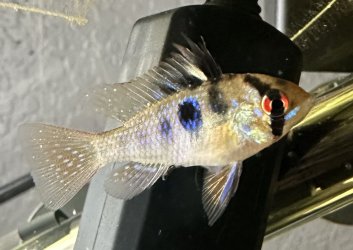The Big Figfetti
Fish Fanatic
I purchased 2 rams from my LFS and had them in quarantine to watch them. I decided they looked and we’re acting ok and put them in my main tank.
Within 15 minutes, I noticed one of them twitch a few times and the other one had white spots that I hadn’t seen there before.
The shop treats for ich, among other things, and I hadn’t seen any signs while they were in quarantine.
But I decided to take them out of the tank anyway and back in quarantine.
I’ll continue to watch them, but now I’m worried that I may have infected my main tank.
Would 15 minutes be long enough to infect the tank, if it was ich? And how long will I need to look for signs on my main tank fish?
Within 15 minutes, I noticed one of them twitch a few times and the other one had white spots that I hadn’t seen there before.
The shop treats for ich, among other things, and I hadn’t seen any signs while they were in quarantine.
But I decided to take them out of the tank anyway and back in quarantine.
I’ll continue to watch them, but now I’m worried that I may have infected my main tank.
Would 15 minutes be long enough to infect the tank, if it was ich? And how long will I need to look for signs on my main tank fish?






